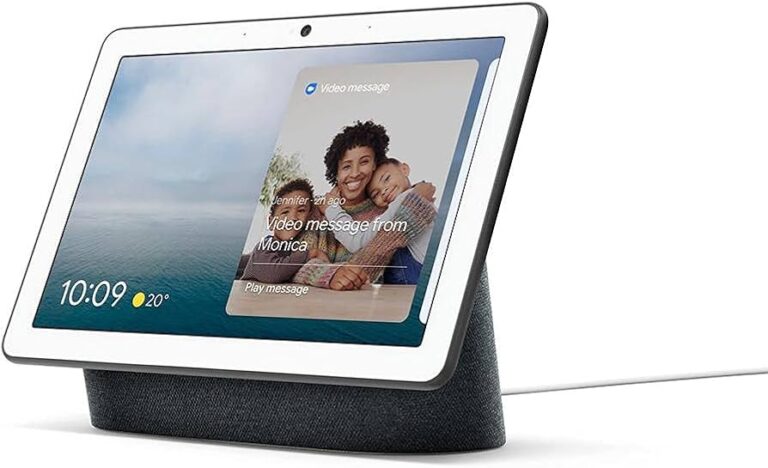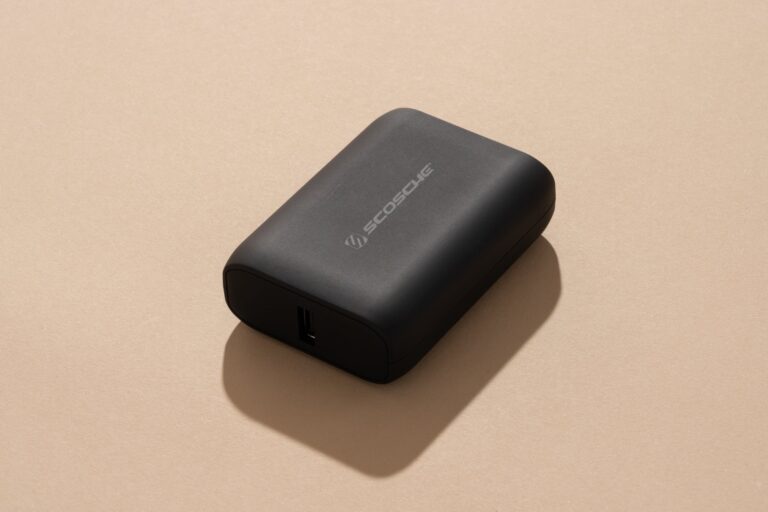Once upon a time, we marveled at the unique charm of analog technology. The click-clack of the typewriter keys, the whir of the rotary phone dial, and the soft glow of the cathode-ray tube televisions. With the advent of the digital age, these retro gadgets seemed to fade into the shadows, forgotten relics of a bygone era. But, in an intriguing turn of events, we’re witnessing the resurrection of these vintage items in our digital-driven world.
The advent of digital technology was a game-changer, introducing sleek designs, touch screens, and voice commands. Yet, amidst the sea of smart devices, an increasing number of people are craving the tactile engagement and nostalgic charm that comes with retro gadgets. These vintage tech pieces, making a surprising comeback, are not just feeding our nostalgia but are being modernized to fit the digital age.
In the forthcoming sections, we will delve into the intriguing world of retro tech resurgence. We will highlight some iconic gadgets making a triumphant return, from vinyl record players to Polaroid cameras, and discuss how these pieces have been adapted to suit our modern needs. We’ll also explore what’s driving this trend and the impact it’s having on the tech market and consumer behavior.
Whether you’re a tech enthusiast, a nostalgia junkie, or simply curious, you’ll find the journey through this retro-tech revival fascinating. The blend of the old and new, analog and digital, mechanical and electronic, offers a unique perspective on technology’s evolution and its cyclical nature.

So prepare for a nostalgic trip down memory lane as we explore the revival of the past in the digital age. Stay tuned as we delve into the wonder of retro gadgets making an unexpected, yet delightful, comeback. 📺🎞️💾
The Renaissance of Vinyl Records
In the age of streaming music platforms like Spotify and Apple Music, it may seem surprising that vinyl records are making a significant comeback. Once thought to be a relic of the past, this retro gadget is experiencing a resurgence in popularity, thanks to its warm, rich sound quality and the nostalgia it evokes.
According to the Recording Industry Association of America (RIAA), vinyl record sales surpassed CD sales for the first time in 34 years in 2020—a milestone that highlights a major shift in consumer preferences. While digital formats offer convenience, vinyl provides a unique, tactile experience that streaming simply can’t replicate.
Part of vinyl’s appeal lies in the ritual: placing the needle on the record, flipping the disc, and admiring the album’s full-size cover art. The analog sound—often described as warmer and more authentic—resonates deeply with audiophiles. Additionally, for collectors and music lovers, vinyl records hold aesthetic and sentimental value, making them cherished items rather than just listening tools.
The Return of the Polaroid Camera
The Polaroid camera, an iconic symbol of the 70s and 80s, is once again finding its place in the spotlight. In an era dominated by digital photography and smartphones with high-resolution cameras, the resurgence of instant film photography might seem unexpected. However, this nostalgic gadget has tapped into a growing desire for authenticity and physical connection in the digital age.
One of the key reasons behind the Polaroid camera’s comeback is the instant gratification it offers. Unlike digital photos that often remain buried in phone galleries or cloud storage, Polaroid photos materialize within seconds, creating tangible memories you can hold, share, or display. The charm of the square format, the iconic white border, and the unpredictability of each shot add a layer of uniqueness that modern photography often lacks.
Modern brands have capitalized on this vintage appeal while updating the technology to meet current expectations. Companies like Fujifilm with their Instax line, and Polaroid Originals (now just Polaroid again), have released a new generation of instant cameras that blend classic design with contemporary functionality. Features like built-in flash, auto-focus, Bluetooth connectivity, and even companion apps allow users to enjoy the nostalgia of instant prints with the convenience of modern tech.
These updated instant cameras appeal not just to older generations reminiscing about the past, but also to younger audiences drawn to retro aesthetics and the novelty of analog experiences. In a world where digital filters and endless retakes dominate photography, Polaroid cameras encourage users to slow down, embrace imperfections, and celebrate spontaneity.
Whether used for travel journaling, decorating spaces, or simply capturing moments with friends, the Polaroid camera has proven that its magic never truly faded—it just needed the right moment to reappear.
Typewriters: A Blast From the Past
Even in a world dominated by sleek laptops, cloud-based word processors, and voice-to-text applications, the humble typewriter has found a new generation of admirers. Once a staple of 20th-century offices and homes, typewriters have transitioned from obsolete relics to coveted tools for writers, collectors, and vintage tech enthusiasts. Their resurgence is more than just a nostalgic whim—it’s a deliberate movement toward simplicity, mindfulness, and creative authenticity.
One of the primary reasons typewriters are making a comeback is the unique, tactile experience they offer. Typing on a typewriter is a full-body action: each keystroke requires intention, and every letter leaves a permanent mark. The satisfying “click-clack” rhythm and the physical effort needed to strike each key create a more immersive and focused writing environment, free from the distractions of pop-up notifications, emails, and social media.
Writers and creatives are especially drawn to typewriters for this very reason. Unlike modern devices that come with endless tabs and applications, a typewriter demands single-tasking. It helps the user stay in the moment, focusing solely on the words being crafted. For many, this results in deeper engagement with the creative process, less temptation to self-edit mid-thought, and greater productivity.
Moreover, there’s an undeniable charm in the imperfections and quirks of typewritten text—slightly uneven lines, occasional typos, and the distinct ink impressions that give each page character and uniqueness. The final product feels like a physical extension of the writer’s mind, far removed from the sterile uniformity of digital fonts.
The typewriter revival has also been fueled by cultural influencers and celebrities who proudly endorse their love for the machine. Tom Hanks, for instance, has long been a vocal enthusiast and even released a mobile app (Hanx Writer) that emulates the typewriter experience on tablets. Such endorsements have sparked curiosity among younger generations, introducing them to the charm of analog creativity.
Today, refurbished vintage typewriters are being sold in specialty shops and online marketplaces, while new manufacturers are even producing modern versions with improved mechanics. Some models now offer hybrid designs—mechanical typewriters with USB connectivity—bridging the gap between old-world aesthetics and modern functionality.
In essence, the return of the typewriter is not just about going retro—it’s a movement that values intentionality over speed, physicality over convenience, and creativity over efficiency. In a fast-paced digital world, the typewriter offers a refreshing pause, inviting us to reconnect with our thoughts, one keystroke at a time.
The Iconic Nokia 3310
The Nokia 3310 is more than just a mobile phone—it’s a cultural icon. First released in the year 2000, the 3310 quickly gained legendary status for its rugged design, impressively long battery life, and straightforward usability. Over the years, it has earned a near-mythical reputation as an “indestructible” device, inspiring memes, tech nostalgia, and even fan-made durability tests. So when Nokia announced the relaunch of the 3310 in 2017, the excitement was palpable among fans of classic mobile tech.

The updated version of the Nokia 3310 pays homage to the original while incorporating a few modern touches. It features a colorful 2.4-inch screen instead of the original monochrome display, a 2-megapixel camera, microSD support, and basic internet connectivity through 2G. Most notably, it comes pre-installed with a revamped version of the iconic game Snake, which alone is enough to spark fond memories for millions of users around the world.
Despite these upgrades, the essence of the 3310 remains firmly intact. It is intentionally minimalist, designed for those who want to step away from the hyper-connected world of smartphones without sacrificing basic mobile communication. This simplicity is what gives the Nokia 3310 its unique charm. It’s a device that offers texting and calling with no distractions—no social media apps, no endless notifications, and no temptation to scroll mindlessly. It appeals to users who crave digital detox or who need a reliable secondary phone for travel or emergencies.
Another major draw is its battery life. While modern smartphones struggle to last a full day without charging, the 3310 can last up to a month on standby and several days on active use with just one full charge. For those who value reliability and endurance over high-tech features, this is a significant advantage.
The device also resonates with a younger generation seeking retro appeal. Whether out of curiosity or a desire for something different, many millennials and Gen Z users have embraced the 3310 as a statement piece—both for its nostalgic value and its role as an antidote to the constant demands of the digital age.
Beyond personal use, the Nokia 3310 has also found a niche in specific markets. In rural areas or developing regions where smartphone coverage may be limited or costly, the 3310 serves as a dependable communication tool. Its solid build, low cost, and ease of use make it ideal for basic connectivity.
In conclusion, the Nokia 3310 isn’t just a throwback—it’s a symbol of simplicity, resilience, and practicality. In an age where smartphones dominate and complexity reigns, the Nokia 3310 offers something refreshingly different. Its revival proves that sometimes, going back to basics can be the smartest choice of all.
The Resurgence of the Game Boy
Nintendo’s Game Boy, a staple of 90s gaming, has found new life in the digital age. Nostalgia for the handheld console’s classic games, as well as its simplicity and portability, have driven its resurgence.
Companies have capitalized on this trend by releasing updated versions of classic Game Boy games, as well as new titles designed to emulate the Game Boy’s iconic 8-bit aesthetic. Additionally, enthusiasts and collectors have driven up the demand for original Game Boy consoles and games.

A Blast from the Past: The Tamagotchi
Remember the Tamagotchi, the digital pet that took the world by storm in the 90s? Well, it’s back—and it’s more popular than ever. Today’s Tamagotchis preserve the original charm and simplicity that made them so beloved, while introducing modern upgrades like color screens, enhanced animations, and even Bluetooth connectivity.
What makes the Tamagotchi’s revival so compelling is its ability to foster a sense of responsibility and emotional attachment. In a digital landscape overflowing with complex, high-stakes gaming, the Tamagotchi stands out as a simple, nostalgic, and surprisingly meaningful experience.
Its enduring appeal lies in the balance between nostalgia and simplicity, offering a low-pressure yet emotionally engaging alternative in today’s fast-paced digital world.
Conclusion
In conclusion, the resurgence of retro gadgets in the digital age is an exciting fusion of past and present technologies. These vintage-inspired devices have made a significant comeback, proving that old styles can find relevance and popularity in a world obsessed with advancement. The return of these nostalgic items, such as vinyl records, Polaroid cameras, and retro gaming consoles, offers a welcome respite from our high-speed, digitally-focused lives. They provide a tactile and sensory experience that modern devices often lack. Furthermore, these retro gadgets are a testament to enduring design and functionality. Their comeback is not just about sentimentality but also about appreciating the timeless value of good design and quality. As we continue to navigate the digital age, the resurgence of retro gadgets serves as a charming reminder of our technological heritage, while simultaneously offering a unique, personal touch in our increasingly impersonal digital world. Therefore, even as we forge ahead into the future of technology, the charm of the past remains an influential factor, resonating deeply with consumers. The revival of retro gadgets is more than just a trend—it’s a lifestyle choice, merging the best of the past and the present. 🎮📸🎵



